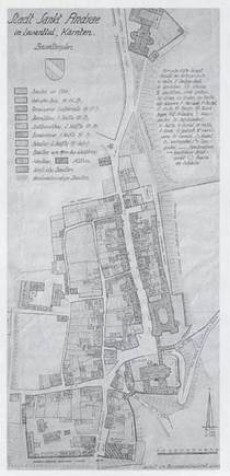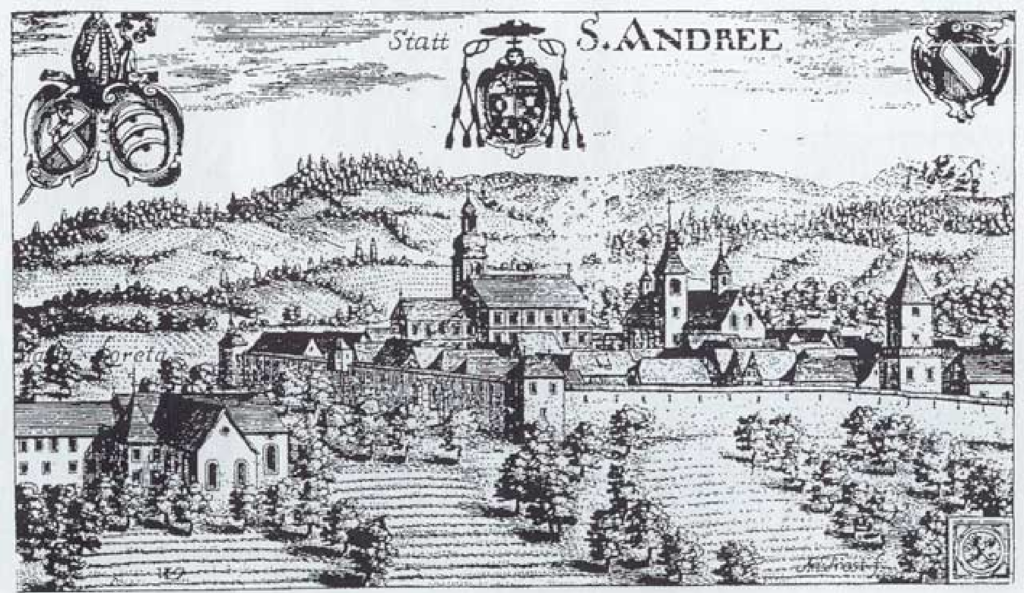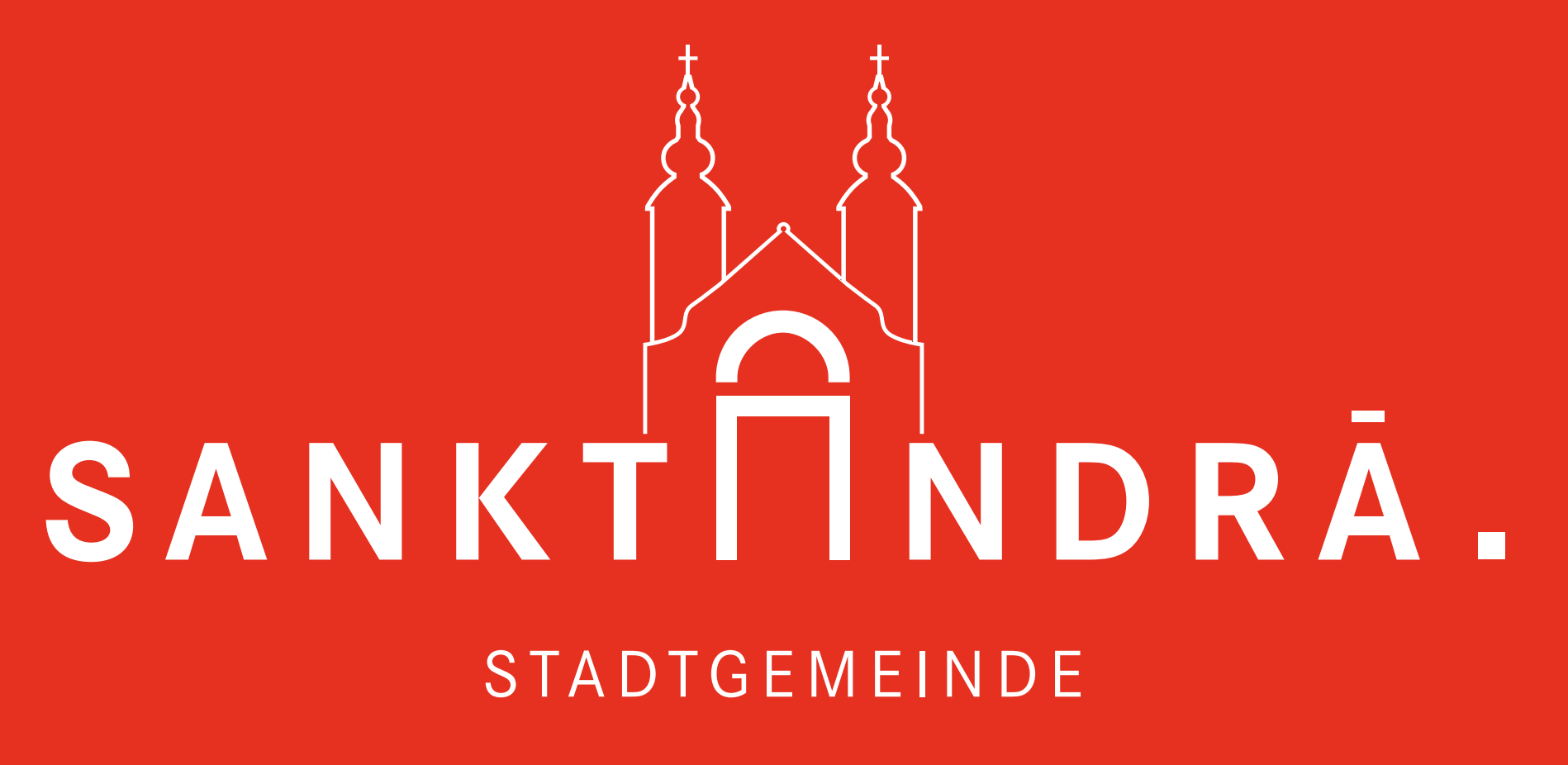St. Andrä lies on a river terrace of the Lavant, in the middle of the beautiful landscape of the Lavanttal, the paradise of Carinthia. The cityscape is dominated by two churches: the cathedral church, once the cathedral of the bishops from Lavant and the Church of Pilgramage Maria Loreto.
History
von St. Andrä

860
In the year 860, Emperor Louis the German confirmed the possessions of the Archbishopric of Salzburg in Carantania. A passage in this document reads: 'curtis ad Lavantam' 'estate at the Lavant.' This Carolingian royal court in the County of Lavant was then known as the main center of the valley and also a settlement that emerged around this royal court, called Lavant. In later centuries, the court was referred to as the 'Pflegehof of the Archbishops of Salzburg' or simply 'Salzburg Court.' In the first half of the 18th century, the father of Mozart's mother served as the administrator at the Salzburg Court in St. Andrä. St. Andrä was under the ecclesiastical and secular rule of the Archbishops of Salzburg. The Vizedomamt in Friesach exercised the sovereign rights, representing the Salzburg Archbishops.
976
According to a document from the year 976, Archbishop Friedrich enfeoffed the cleric (parson) Wito with the church estate of the Church of St. Andrew. This is the oldest documented mention of the parish of St. Andrä.
1180
The parish priests of the Church of St. Andrew have always been held in high esteem. In a document from the year 1145, the Church of St. Andrew is designated as a parish and baptismal church. In 1180, Archbishop Conrad III bestowed upon the priest Konrad the title 'Provost,' which was an honor for special merits and highlighted the status of the Church of St. Andrew.
1203
Archbishop Eberhard II confirmed the archdeaconry to the Church of St. Andrew in 1203. All churches in the lower Lavant Valley, except for St. Paul, were under the jurisdiction of the archdeacon of the Church of St. Andrew.
1212
In 1212, Archbishop Eberhard II also founded an Augustinian Canons Regular monastery for the spiritual care of the Church of St. Andrew. The respective provost of the monastery also held the position of archdeacon and later became the deputy of the Bishop of Lavant.
1228
Significant for the history of the city is the year 1228. Archbishop Eberhard II founded the Lavant Diocese here at the Church of St. Andrew. The Church of St. Andrew was elevated to the status of a cathedral. The Lavant Diocese was the smallest diocese. The endowment of the diocese did not provide the bishops with a carefree and luxurious life; however, the Lavant Bishopric saw men who, in their time, would become among the most notable personalities.
The bishops of Lavant, although holding the title 'Prince-Bishop' since 1318, had neither significant spiritual nor secular importance as they were subordinate to the Archbishop of Salzburg. It is noteworthy that the bishops of Lavant rapidly succeeded each other, with many of them ascending to higher ecclesiastical and secular positions from here.
One of the most notable bishops of Lavant was Bishop Georg III Stobäus von Palmburg (1584 – 1618). Born in East Prussia, he studied at the Germanicum in Rome. In 1597, he was appointed by Archduke Ferdinand as the regent of Inner Austria. Bishop Stobäus, a highly gifted and humanistically educated man, led the Counter-Reformation in Carinthia and Styria alongside Bishop Martin Brenner of Seckau. As the emperor's envoy, he undertook extensive travels to Italy, Spain, Transylvania, Poland, and Silesia. Despite his significant contributions, Bishop Georg III was offered the cardinal's title, which he humbly declined. His last years were spent here in St. Andrä, where his tomb can still be seen next to the high altar in the Church of St. Andrew.
1234
In 1234, Archbishop Eberhard II granted the tolls and salt duties 'in fora ad sanctum Andream' (for the market at St. Andrew) to the provost and cathedral chapter. The market must have been established shortly before, and the long rectangular layout that still characterizes the city today is typical of Archbishop Eberhard's market foundations.
1289
In a papal bull reporting on the destruction caused by Duke Albert of Austria in the struggle against Archbishop Rudolf of Salzburg in the Lavant Valley, St. Andrä is first mentioned as a city in 1289, referred to as 'civitas Lauentina.' At the beginning of the 13th century, the place was known, as attested by numerous documents, as Lavant! Only around the mid-13th century is the place also called St. Andrä because during this time, the center of the town was no longer the Lavant court, but rather the Church dedicated to St. Andrew, which now also served as the bishop's seat.
1339
In 1339, Duke Albert II of Austria granted Archbishop Heinrich of Salzburg the right to fortify the city of St. Andrä with walls and a moat. Remnants of the old city wall are still preserved, and the eastern city gate still testifies to the defensibility of the small medieval town. Since the 14th century, the city of St. Andrä had its own urban constitution, an independent city administration with a magistrate, city council, city judge, city inspector, citizen militia, the right to hold various markets, and the right to collect tolls and duties. This city law granted its residents privileges that significantly differed from the laws applicable in the rural areas. The free citizens of the city were predominantly craftsmen. Many now long-forgotten professional groups, such as potters, bakers, rope makers, saddlers, dyers, soap makers, coppersmiths, among others, had their workshops and shops in the city. Each citizen's house had some land outside the city walls, and in the backyards, stables were accommodated for a horse, several cows, calves, and pigs. History textbooks describe a medieval city in this way, and life in the old episcopal city of St. Andrä was no different. However, the city was repeatedly struck by severe times of adversity. The dreaded plague ravaged the city several times, reaping a rich harvest of death. Dangerous fires broke out a few times (1727, 1821, and 1886), nearly the entire city was engulfed in flames, and the devastating fire destroyed the property and belongings of the industrious citizens.
1417
In 1417, the Turks besieged the fortified city but were unable to capture it. When the Archbishops of Salzburg engaged in military conflicts, the city of St. Andrä, being a possession of Salzburg, suffered severely on several occasions. Archbishop Bernhard had a feud with Emperor Frederick III.
1480-1494
So, in 1480, imperial troops under Leonhard von Kollnitz seized the city by surprise, looted and plundered it, and only returned it to the Archbishop in 1494.
1803
In 1803, after the Peace of Pressburg during the Napoleonic Wars, the Archbishops of Salzburg lost their secular power as reigning princes. All Salzburg possessions came under Austrian rule. The city of St. Andrä was taken over by the Imperial and Royal State Property Administration in Klagenfurt and was now referred to as the 'Cameralherrschaft St. Andrä.
1809 - 1859
In 1809, approximately 5000 French soldiers camped overnight in St. Andrä and its surroundings. The soldiers confiscated food, wine, and cider, caroused, made noise, and shouted until the late night hours. The next morning, they moved on. The Austrian state partially compensated the damage caused.
The relocation of the episcopal seat to Maribor in 1859 is rooted in the diversity of dioceses in Carinthia (Salzburg, Gurk, Laibach, Aquileia) and the resulting administrative problems in the church.
Emperor Joseph II tasked Bishop Graf Auersperg of Gurk, who had also been the Bishop of Lavant from 1763 to 1772, with developing a new diocesan division for Inner Austria. After years of negotiations, the emperor finally issued the new diocesan regulation in 1786 through a decree with the approval of Pope Pius VI. The Bishop of Gurk received the entire territory of Carinthia as the diocesan district, excluding the political districts of Wolfsberg and Völkermarkt. An objection to this new diocesan regulation by the Lavant Prince-Bishop Graf Schrattenbach was dismissed by the emperor.
At that time, the Diocese of Lavant comprised the deaneries of St. Andrä, Wolfsberg, Bad St. Leonhard, the district of Völkermarkt, and the district of Celje (91 parishes). In 1804, with the dissolution of the Diocese of Leoben, the Maribor district also became part of the Diocese of Lavant.
As a result, the diocese experienced a shift in focus, with the majority of the population now speaking Slovenian. The relocation of the episcopal seat was already considered at this point. The cities of Maribor, Ptuj, and Celje were considered as potential future episcopal seats. Maribor ultimately won the competition, primarily because they were able to carry out the necessary construction measures (residence, canon houses, seminary, etc.).
In 1857, a decree from Pope Pius IX formalized the relocation of the episcopal seat from St. Andrä to Maribor, and on September 4, 1859, Bishop Anton Martin Slomsek made a solemn entrance into the new episcopal city of Maribor. The city of St. Andrä lost its former significance, leading to an economic decline.
1919
The Grand Master of the Teutonic Order, Archduke Maximilian, purchased the residence of the bishops and their estates and gifted to the Jesuit Order, along with the Thürn Castle estate. After a century of activity, the Jesuits also left their religious establishment in St. Andrä in 1960. The former episcopal residence is now a home for elderly individuals – Providentia (Haus Elisabeth). During World War I, the Jesuit monastery accommodated refugees from Galicia. In the Carinthian defensive struggle, men from St. Andrä were involved. In June 1919, armistice negotiations between Austrian and Yugoslav officers took place in the conference room of the elementary school.
1940
In 1940, the Jesuits were expelled from St. Andrä by the Nazis, and their property was confiscated. During the Second World War, German resettlers from the Kanaltal region occupied the Jesuit monastery, and in 1945, the English troops were quartered there. Truly, a tumultuous history for the city.
1973
In 1973, St. Andrä became a large municipality, stretching from the summit of the Koralpe in the east to the heights of the Saualpe in the west. The old episcopal city has once again become a center for local administration, artisan business activities, and cultural encounters in the middle Lavant Valley.

Municipality St. Andrä
Lavanttal / Carinthia / Austria
St. Andrä 100
9433 St. Andrä
Tel: +43 (4358) 27 10 / 40
Fax: 43 (4358) 27 10 / 49
E-Mail: mailto:kultur@st-andrae.at

